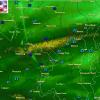-
Posts
3,009 -
Joined
-
Last visited
Content Type
Profiles
Blogs
Forums
American Weather
Media Demo
Store
Gallery
Everything posted by high risk
-
The simulated radar products from the CAMs for the next 2 days look more like what I'd expect to see in July instead of late September.
-
Woke up to a heavy shower around 3am or so and found a gloriously unexpected 0.15" in my gauge this morning.
-
Now that we're in CAM range, what really stands out to me is that this is going to me much more of a showery event than the rain shield I was expecting.
-
It's pretty clear that there will be a tight gradient on the northern side of the precip shield Tuesday-Wednesday. For those of us north of DC, the question is whether we're in the decent amounts.
-
Seems to be a growing likelihood of a midweek coastal low to bring most of our area at least some rain. Details are obviously still completely unresolved, but it's on a number of deterministic and ensemble systems.
-
Radar filled in gloriously after 10pm. Got 0.36” and am thrilled about it.
-
Yes, the tonight/tomorrow rain chances are sneaking up on us fast.
-
Interesting trend in some of the evening guidance to slow the exit of the clouds and showers on Sunday. The HRRR is the slowest, with showers not exiting the DC area until after noon and temps staying in the 60s all day with clouds. The NAM Nest and HiResW ARW2 both keep shower chances around through much of the morning but still get sun by midday. HiResW FV3 gets the showers out early, and clearing arrives quickly.
-
The convective part of the event was always going to be trickier for those north and west of I-95 in Maryland. Still looks good for the stratiform part later.
-
Really disappointing event so far. We'll get something shortly, but it won't be a crusher. Guidance really liked the area right along I-95 this afternoon in Maryland, and they were on the right track, but that axis has set up just a bit further southeast. At least we're still on track for the overnight rain. I'm not totally sure whether this will a tenth or two or significantly more, but as noted by you earlier, it will be a while before we get another opportunity, so we need to cash in with *something*.
-
There is very strong agreement on the more widespread post-frontal precip - the questions are with timing, but consensus seems to favor an initial more organized area around midnight and then a second round closer to morning. Some solutions keep the shower threat going until 10AM or so before we finally clear out. If clouds do persist Sunday morning, it will be quite chilly until the clearing arrives. The storm coverage late this afternoon remains less clear, although most models show at least scattered storms around, with the NAM Nest really liking the DC to Baltimore corridor. Still struggling to comprehend that the forecast soundings today in early September favor some tornado potential in Maine.
-
Some of us will get lucky and get a storm later this afternoon, but the best chance for widespread showers is later tonight into Sunday morning.
-
That’s the RRFS, which will become operational early next year.
-
Yeah, the NAM Nest has the greatest instability and slowest evolution of the afternoon convection, and its solution would be a SLGT for sure. The straight line hodographs, with that amount of instability, would promote some supercell structures. (I'm not saying tornadoes, as the low-level shear will be weak). The majority of CAMs, however, are not nearly as enthused.
- 1,378 replies
-
- 1
-

-
- severe
- thunderstorms
-
(and 2 more)
Tagged with:
-
Unfortunately, the 18Z joined the east trend. We *may* still be in the game along the 95 corridor in Maryland, but we’re running out of wiggle room. On the positive side, most guidance has a signal for some anafrontal rain, either during the late evening, overnight, or early Sunday hours.
-
The NAM Nest is glorious, but I have to acknowledge that I share the concern that others have about this event ending up more east of here. There is a bit of an unfavorable trend in some of the guidance.
-
Saturday would be a SLGT on the NAM Nest, with even some potential for supercells. But the forecast dew points may be too high, and the occurrence/location of a mesolow is of course in doubt at this range.
-
The Wednesday evening hi-res guidance is very encouraging for Thursday late afternoon / early evening convection, especially over central Maryland.
-
Yes! And it also likes a possible second round on the primary front. I’ll take anything I can get.
-
I should probably know better, but I'm hopeful that a number of us will see a couple of tenths Thursday. It won't be a widespread soaker, and there will be some big losers, but the pre-frontal trough should initiate convection with some degree of organization Thursday afternoon.
-
I got 0.02" which increased my August rainfall total to 0.05".
-
remarkably, there is one shower in the entire Mid-Atlantic this evening, and it's right over my house.
-
And it sure doesn't seem like a decent rain is coming anytime soon. I've seen many bone-dry Septembers, but having the rain shut off in early August doesn't happen very often.
-
There is a lot more support for the cooler solution in the evening guidance, including from the always-mixed and warm HRRR and HiResW FV3. There is also growing consensus that much of the area might not get out of the 60s on Tuesday
-
You beat me by 0.026"





